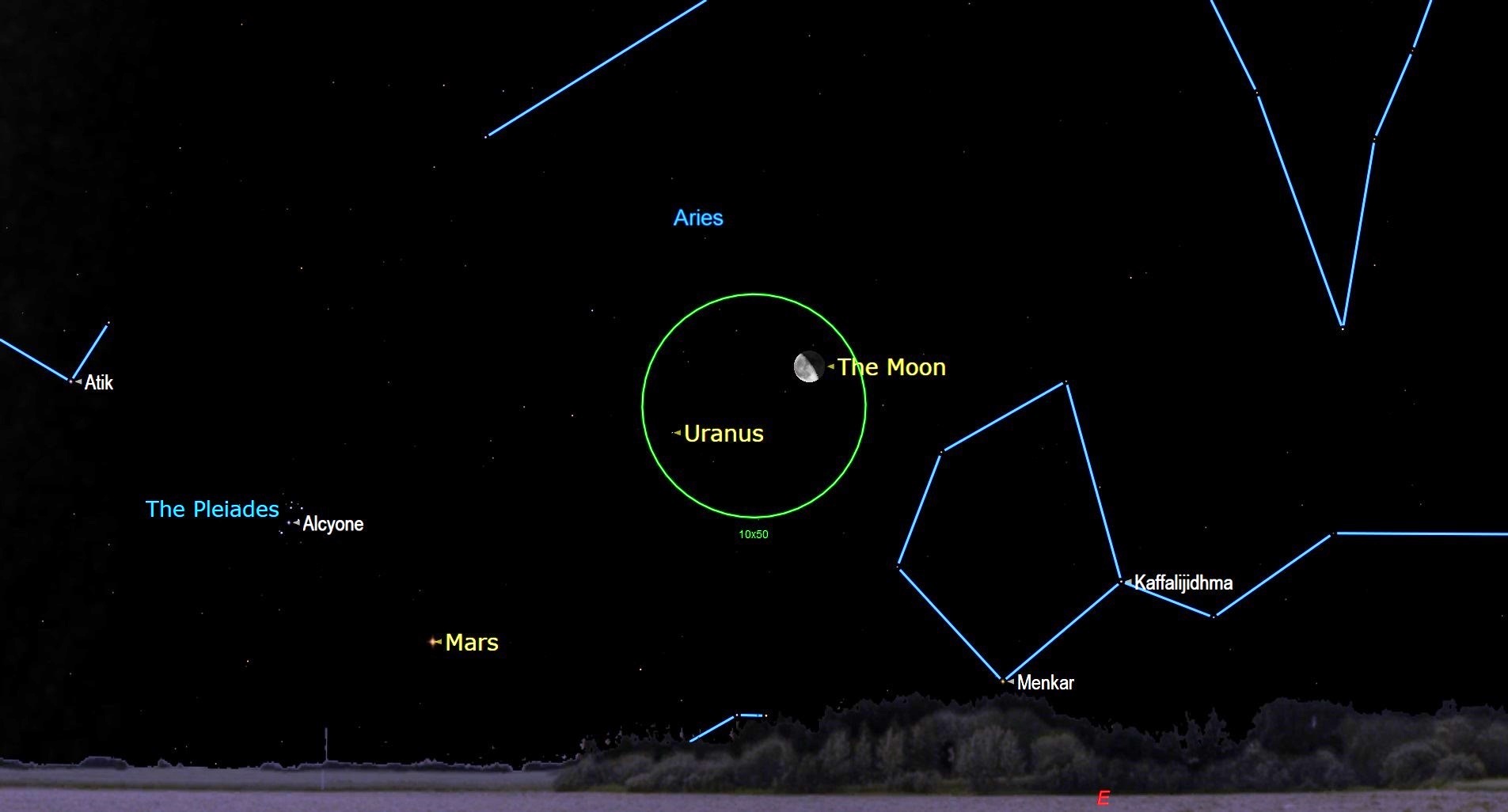See the moon hop over Uranus in the night sky on Aug. 18
The lunar occultation will be visible in the afternoon with a pair of binoculars.

Watch the moon as it appears to "hop" over Uranus in the afternoon sky tomorrow (Aug. 18).
The moon will pass in front of the planet Uranus — an event known as lunar occultation — at 11:50 EDT (1550 GMT). The ice giant will then reappear at 12:02 EDT (1602 GMT), on the other side of the moon. The event will be visible from parts of the northern United States, Canada, Hawaii and the Republic of Kiribati, according to In-the-Sky.org.
"Lunar occultations are only ever visible from a small fraction of the Earth's surface," according to In-the-Sky.org. "Since the moon is much closer to the Earth than other celestial objects, its exact position in the sky differs depending on your exact location on Earth due to its large parallax. The position of the moon as seen from two points on opposite sides of the Earth varies by up to two degrees, or four times the diameter of the full moon."
Related: Night sky, August 2022: What you can see this month [maps]

Looking for a telescope to see Saturn? We recommend the Celestron Astro Fi 102 as the top pick in our best beginner's telescope guide.
At the time of occultation, the moon will be about 56% illuminated, while Uranus will have a magnitude of 5.8. The planet will dip behind the illuminated side of the moon and reappear from behind the unilluminated side.
Viewers can look toward the constellation Aries using binoculars to see the moon occult Uranus. However, given the timing of the lunar occultation, the bright daytime sky may make it challenging to see the event. Viewers are encouraged to use extreme caution since looking up at the sky when the sun is above the horizon can cause permanent eye damage.
If you're hoping to capture a good photo of the event, check out our guide on how to photograph the moon, along with the best cameras for astrophotography and best lenses for astrophotography. You can also check out our guides for the best telescopes and best binoculars to prepare for viewing the lunar occultation.
Get the Space.com Newsletter
Breaking space news, the latest updates on rocket launches, skywatching events and more!
Editor's Note: If you snap an amazing photo of the lunar occultation and would like to share it with Space.com's readers, send your photo(s), comments, and your name and location to spacephotos@space.com.
Follow Samantha Mathewson on Twitter @Sam_Ashley13. Follow us on Twitter @Spacedotcom or on Facebook.
Join our Space Forums to keep talking space on the latest missions, night sky and more! And if you have a news tip, correction or comment, let us know at: community@space.com.

Samantha Mathewson joined Space.com as an intern in the summer of 2016. She received a B.A. in Journalism and Environmental Science at the University of New Haven, in Connecticut. Previously, her work has been published in Nature World News. When not writing or reading about science, Samantha enjoys traveling to new places and taking photos! You can follow her on Twitter @Sam_Ashley13.









